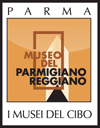The Magnificent history of Parmigiano Reggiano
Told by Mario Zannoni
The great works of land reclamation carried out in Emilia first by the Monasteries and then by municipalities and feudal landowners made available large tracts of land which lent themselves to important agricultural developments. In the XIII century in Parma and Reggio there was already present quite an advanced agricultural system which required ever larger types of cattle both for the cultivation of the land and its fertilisation.
For the great feudal landlords, cheese production was not only something to boast about, it was also an important source of revenue. In this century the cheese was made with the milk of about 30-50 cows and the dimensions of the cheese wheels had increased so that they could weigh up to 18 kg each.
Ranuccio I Farnese, Duke of Parma showed the intuition of a modern day leader when, realising that in an agriculturally based society wealth could only come from the land, he did everything in his power to optimise and increase food production.
The XIX century saw enormous changes in both production and social structures.
The Emilia of 1899 was greatly changed with respect to that of 1801, from an agricultural to an industrial society.
The beginning of the XX century is of fundamental importance to the technical history of Parmigiano Reggiano cheese. It was then that the production technology which is still used today was refined. In the first few years of the century steam heating was introduced in cheese factories, as was the use of a whey starter and the Notari instrument for breaking curds, ‘lo spino a gabbia’. It was Notari himself, active at the Zanelli Institue of Reggio Emilia, who gave a fundamental contribution to the technical development of production.


